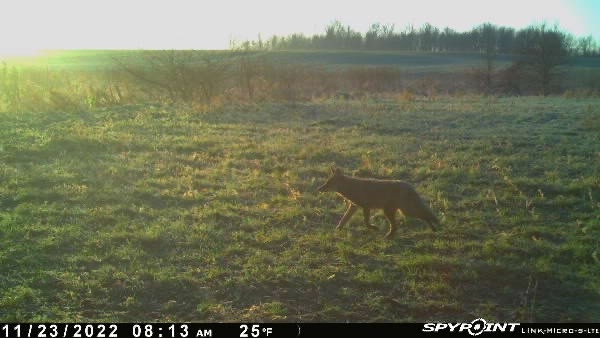
Hunting seasons are in full bloom right now throughout the country, which means it’s a great time for you to identify things to do in the off-season.
Whoa! Don’t wrinkle your nose. You’re going to and from the woods and fields right now. You’re seeing things, wondering what changes you can make or do for next year, and how to do it on the cheap. And then, usually, we forget about those ideas later. That’s why it’s a good thing to take time to plan with written notes to create a spring to-do checklist.
Check back in that last ‘graph, too, with the word cheap. That often has a negative connotation but it’s valid. Cheap, inexpensive, budget … whatever you want to call it, saving money in this day and age is a good thing. Anything you can do to improve your outdoors experiences without laying out a lot of cash is a plus.
Over the years I’ve done some of these things and it paid off down the road. Here are four things you can do, inexpensively, in the off-season that will benefit you when hunting season arrives in September.
Fertilize Native Browse
Years ago I was with Keith Jones, the creator of the Seat o’ the Pants safety harness. That was the first easy-to-wear, storable, safe harness on the market. Jones is a passionate bowhunter and outdoorsman.
We were on a lease he had in Tennessee checking some stands. Jones asked me to take a look at a big stand of honeysuckle. Part of it looked lush and vibrant. The other part looked scraggly. He had thrown some Triple-13 fertilizer on half the stand to see if it would help. Not only did it blow up the honeysuckle, it was clear the deer enjoyed that part more than the scruffy stuff.
Fertilizer prices have gone up but you still can do this on your property. One key thing is to learn what plants are native and beneficial, and which are invasive. Honeysuckle has an invasive variety and you don’t want to give that a boost. Getting rid of them would be a better project, to be honest. In any case, learning about your native vegetation and how to help it is an inexpensive way to get more nutritious browse for wildlife.
Controlled Burning
Want better vegetation and cleaner woods? Fewer ticks this and next year? Less leaf litter for rattlesnakes, copperheads and other “OMG, dang it!” critters?
Learn to do controlled burns, or find someone who can do them inexpensively. Your land and wildlife will thank you for it. Ignore the comments about “Oh, that looks so ugly” because those don’t matter. Ugly has zero impact versus the benefits. Turkeys will be scratching in the soil while it’s still smoldering. Within a couple of weeks, new growth is bustin’ up and things are getting back to normal.
Controlled burns must be done in, as the name implies, controlled settings. Specific humidity and wind conditions, for example, help keep things in check. You will need to make sure with your state or county officials about any burn bans that are in effect. Contacting the neighbors is a good thing to do. Heck, they may want some of their land done, too.
Burning removes the leaf litter that can cause bigger problems in wildfires. The fire can reduce or eliminate some invasive plants, or allow you to do more intensive removal afterward. Burning also can reduce insects and ticks, which may survive cold conditions but won’t survive a fire.
Burning is good, when done in a controlled manner.
Trim Shooting Lanes
This is one of the easiest things that I do each year after deer season ends, and it helps during hunting season eight months later.
My tools? A limb lopper, hand saw, hedge clippers and pole saw. I favor the Gerber brand, as they’ve always been good for quality and durability. I don’t use a chain saw although that’s a good addition, too, should you have or want one. I’m not cutting down anything larger than the size of my arm or calf, though, so I don’t use one.
Consider where you hunt, either on the ground or in a tree. Then consider your entry and exit routes, based on wind or property borders. Primarily the wind. You want to be able to get in and out with as minimal impact as possible. Now get to work trimming limbs, saplings and cutting those routes to your stand locations. Trim any saplings close to the ground to prevent tripping hazards. You don’t want to stub a toe and fall in the dark.
At the stand sites, look at prospective shooting lanes and then get to work. Trim to create openings. You could do this to specific distances, too, like 30 yards for a bow shot or 40 for crossbow.
Yes, things will grow in spring and summer. Yes, you might not hunt those areas. But if so, you’ve done the hard work early enough to likely not impact anything by the next season. Paths will be clearer, shot lanes will be open. It’s simple work that can pay off.
Learn to Trap
If you have turkeys or upland birds, egg-sucking predators are your biggest enemy. If you have deer and coyotes, the latter is honing in on the fawns as tender vittles, along with rabbits and anything else they can get.
Learn to trap and get busy this year. It’s not too late right now to learn how to do coyote sets and get going with them after deer season. Song dogs will be searching for mates and food from January through March during breeding season kicks in. It’s always about food and sex, right? Trapping during those months, and on into summer should you be inclined despite the heat and humidity, ultimately will pay off.
Coyotes have territories, and once you remove one via trapping or hunting, another eventually takes its place. That’s why year-round trapping and predator control is important. If you have like-minded neighbors, all the better. Work together for trapping and hunting. Use your game cameras to identify predators (four- and two-legged) and get after them. Learn to call and hunt, because it’s fun, along with trapping.

Start online, find a state predator hunting association, and ask questions. Some state agencies offer classes. YouTube has great content as well, from folks like Hoosier Trapper Supply, Coon Creek Outdoors, and even our own Josh Pretzer. Your initial financial layout for traps and some gear will pay dividends for years. If you do this, the deer, turkey and other wildlife on your property will be grateful.



